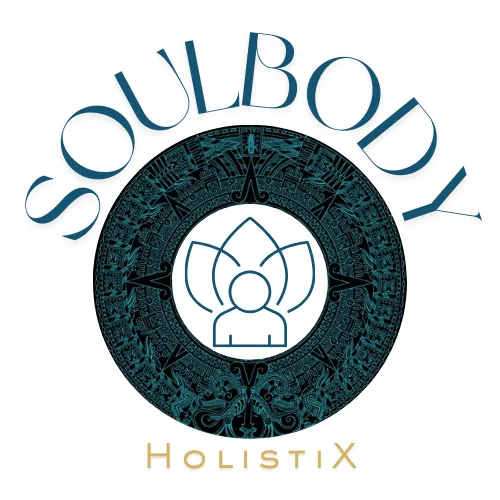Insights & Inspirations for Your Wellness Journey
From cultura to clinical wisdom—this is wellness that honors your roots and your rhythm. Get expert guidance, soul-aligned support, and real talk to help you feel energized, balanced, and fully you.

Histamine Intolerance 101: Why You Feel Off (and What to Do About It Without More Meds)
There’s very little more frustrating than feeling like your body is out here playing adivinanzas with your symptoms. One day you’ve got a pounding headache, the next you’re breaking out in hives or clutching your stomach after eating a meal you’ve had a hundred times before—like, why??
You go to the doctor, they run labs, and what do you hear? “It’s just stress.” “You’re probably just sensitive.” Or worse: “Everything looks normal.” 🙃
But deep down, you know something’s off. You feel it. And I want you to know—you’re not imagining this.
Let me introduce you to something that’s rarely talked about in the exam room, but might be exactly what you need to hear: histamine intolerance.
What Is Histamine Intolerance?
Histamine isn’t just that thing you take an antihistamine for during allergy season—it’s a chemical your body actually makes on purpose. It helps with digestion, immune responses, and even brain function.
But when your body can’t break down histamine properly? That’s when the trouble starts.
There’s an enzyme called DAO (diamine oxidase)—your body’s natural histamine “cleanup crew”—and when DAO isn’t working right (thanks to gut issues, meds, nutrient deficiencies, etc.), histamine builds up like chisme en una carne asada... fast and overwhelming.

How Do You Know If Histamine Is a Problem?
Histamine intolerance can look like a hot mess because it shows up in so many ways:
Skin stuff: flushing, hives, itching, eczema flare-ups
Gut issues: bloating, diarrhea, nausea, acid reflux (a.k.a. the aftermath of eating)
Mood + mind: anxiety, brain fog, dizziness, migraines
Heart palpitations: or feeling like your heart skips a beat
Breathing trouble: congestion, sneezing, asthma-like symptoms
Hormone drama: worsened PMS, irregular cycles, hot flashes
And just like that—your body feels like it’s betraying you. Again.
Why It’s So Often Missed (Even by Good Doctors)
Here’s the truth: histamine intolerance doesn’t show up clearly on standard lab panels. There’s no magical “you have histamine intolerance” test in most conventional clinics.
It gets confused with anxiety, IBS, allergies, or even perimenopause. And because symptoms fluctuate, you might feel fine one day and totally off the next. It’s enough to make you question your own intuition.
Pero you’re not crazy—you’re just being ignored by a system that’s not built for root-cause healing.
What Makes Histamine Intolerance Worse?
Let’s break it down like you’re talking to your bestie over cafecito:
A gut that’s struggling: Think leaky gut, SIBO, or just years of processed foods and antibiotics.
Nutrient gaps: If you’re low in B6, vitamin C, or copper, DAO doesn’t work like it should.
Hormonal shifts: Estrogen increases histamine, so symptoms can get worse around ovulation or PMS.
High-histamine foods: Fermented foods (yes, even kombucha 😩), aged cheeses, wine, processed meats... all that fancy charcuterie stuff? Yikes.
Medications: Some meds block DAO function—like NSAIDs, antidepressants, and yes, ironically, some antihistamines.
How Do You Test for It?
In functional medicine, we look at:
Histamine and DAO levels in the blood
Nutrient testing (especially for those DAO-supportive vitamins)
Gut health panels (SIBO, dysbiosis, leaky gut, etc.)
But honestly? The biggest test is your lived experience. If symptoms flare after certain foods or during specific times of your cycle, that’s real data too.
How We Heal: The SoulBody Approach 🦋
You don’t need to panic or live in food fear. Healing histamine intolerance is absolutely possible—and no, you don’t have to give up your cultura to do it.
Here’s where we start:
1. Heal the Gut (Sí, otra vez… because it always starts here)
Focus on gut-healing foods like bone broth, aloe, and L-glutamine
Use histamine-safe probiotics (some strains make it worse, so choose wisely)
If SIBO or dysbiosis is present, work with a practitioner to treat the root cause
2. Rebuild DAO Naturally
Load up on:
Vitamin B6 – found in bananas, turkey, potatoes
Vitamin C– think bell peppers, citrus, and yes, that agua de limón counts
Copper – found in seeds, nuts, and si te atreves, organ meats
Quercetin – a flavonoid that calms histamine release (found in onions and apples)
3. Try a Temporary Low-Histamine Diet (Just for a Season, Not Forever)
This gives your gut time to breathe and heal. Focus on:
Fresh (not leftover) meats
Low-histamine fruits like apples, blueberries, and pears
Leafy greens and gluten-free grains
Avoid alcohol and processed foods (sneaky, sneaky big food 👀)
4. Support Detox + Nervous System
Chronic stress keeps your body in fight-or-flight, and guess what that does? Increases inflammation and histamine.
Breathe. Nap. Dance it out.
Eat cruciferous veggies for liver support (broccoli, cauliflower, etc.)
Drink your water and make sweating a weekly habit.
Final Words, From One Mujer to Another:
This isn't about restriction or fear—it's about liberation.
From feeling dismissed. From feeling out of control. From thinking this is just your “new normal.”
No, mija. You deserve clarity, relief, and to feel at home in your own body.
Take it one step at a time. You GET to listen to your body. You GET to feel good.
And you don’t have to do it alone.
Need help personalizing this journey? Book a Holistix Chat session. I got you. 💙
With love and science,
Dr. Alma
References
https://www.rupahealth.com/post/a-functional-medicine-approach-to-histamine-intolerance
Jochum C. Histamine Intolerance: Symptoms, Diagnosis, and Beyond. Nutrients. 2024 Apr 19;16(8):1219. doi: 10.3390/nu16081219. PMID: 38674909; PMCID: PMC11054089.
Maintz L, Novak N. Histamine and histamine intolerance. Am J Clin Nutr. 2007 May;85(5):1185-96. doi: 10.1093/ajcn/85.5.1185. PMID: 17490952.
Comas-Basté O, Sánchez-Pérez S, Veciana-Nogués MT, Latorre-Moratalla M, Vidal-Carou MDC. Histamine Intolerance: The Current State of the Art. Biomolecules. 2020 Aug 14;10(8):1181. doi: 10.3390/biom10081181. PMID: 32824107; PMCID: PMC7463562.


